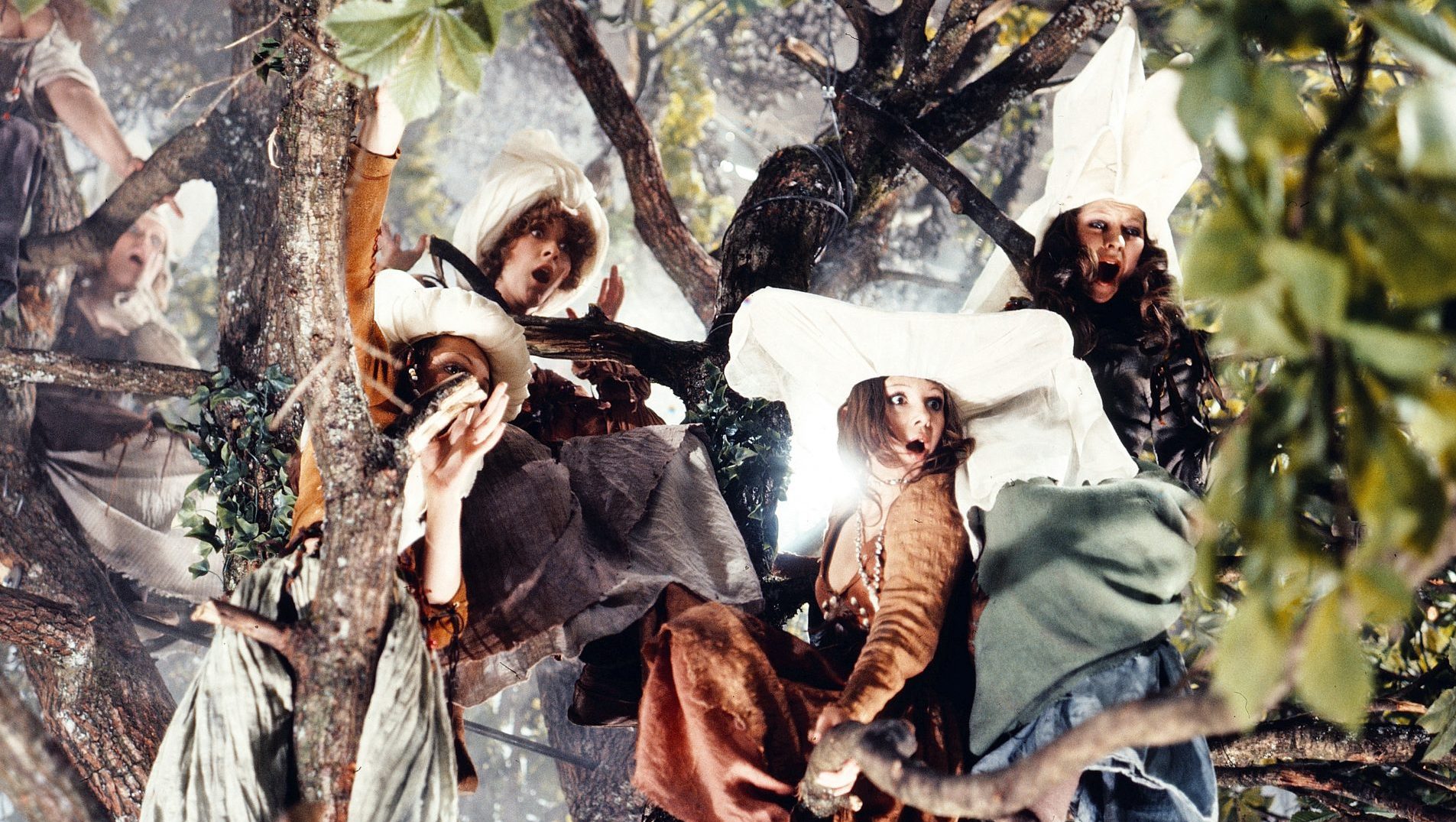Carmina Burana is one of the most popular works in contemporary choral music. Composed by the German Carl Orff, its insistent rhythms and resounding climaxes are usually surefire hits for concert audiences. Its most striking tune, the O Fortuna chorus, is familiar in popular culture, popping up in game shows, sitcoms, feature films and TV commercials for products such as Old Spice and Carling Black Label. The full work is to be performed, as part of this year’s BBC Proms, at the Royal Albert Hall on July 27.
Behind its mass appeal lies a troubling provenance. The clue lies in the year of its first performance in Germany, 1937, when the Nazi party was approaching the zenith of its power, exerting ever more brutal authoritarian control and demanding total allegiance from German citizens. That Orff succeeded in this climate provokes controversy to this day – was he a willing collaborator in the Nazi project? Or was he akin to Shostakovich, struggling to survive in a totalitarian regime while retaining some vestiges of his artistic integrity?
Carl Heinrich Maria Orff was born in Munich in July 1895; his father, an officer in the Imperial Army, had strong musical interests and his mother was an accomplished pianist. Orff showed precocious musical talent and started composing songs as a teenager, including settings of the poet Heinrich Heine. He attended his first opera, Wagner’s Flying Dutchman, in
1909 and the first performance of Mahler’s Das Lied von der Erde in 1911. He enrolled in the Munich Music Academy in 1912, an institution he considered “conservative and old-fashioned”, and in 1914 embarked on a career as a composer and dramatist, heavily influenced by Debussy.
In 1917 Orff was called up and served on the Eastern Front until he was seriously injured in a trench collapse. He was invalided home, suffering from amnesia, speech difficulty, and partial paralysis. After a long, arduous recovery, which extended past the end of the war, Orff resumed his musical career, working in opera houses and adapting works by early composers such as Claudio Monteverdi. He helped found a school for gymnastics, music and dance in Munich, incorporating child-centred learning, and focusing on using the body as a musical instrument, a technique that came to be known as the Orff Schulwerk, literally “Orff Schoolwork”, or the Orff Approach.
Savouring the artistic freedom of the Weimar Republic, he consorted with Bertolt Brecht and composed a series of songs which he called the Brecht
Cantatas. He also nurtured a plan to produce Kurt Weill’s opera Die Bürgschaft, an implicit attack on the rise of the Nazis. His compositions showed the influence of Stravinsky and he was considered a member of Germany’s musical avant-garde.
When the Nazis took power in 1933, Orff changed tack. The crude vulgarities of Nazism were not to his taste but he was anxious to secure their support for his school in Munich, which was his main source of income. He criticised familiar Nazi targets such as jazz and the atonal music of Arnold
Schoenberg, and made clear his support for German folk music, an early interest of his own. Even so, he was still regarded by some Nazi ideologues as a potential subversive, an indication of the fine line he was treading. Meanwhile, a number of his friends and colleagues, including several who were Jewish, fled the Third Reich and found sanctuary abroad.
Orff began composing his setting of Carmina Burana, a collection of medieval poems and texts, around 1934. (The name, which has Latin roots, means songs from Beuren, a monastery in Bavaria). The medieval authors were “goliards”, minstrel clerics, some defrocked, who mocked religious orthodoxies. Written in a mix of Latin, Middle German and Old Provençal French, and often sexually explicit, they told of the pleasures and dangers of drink, gambling, gluttony and lust, celebrated with the return of spring and defied the vagaries and implacability of fate. Orff selected 24, emphasising their message with pounding rhythms and frequently challenging metric variations. Orff termed it a scenic cantata and it is divided into three main sections: Springtime; In the Tavern; and the Court of Love, bookended by the familiar O Fortuna sections. Musically, it draws on a range of styles, from Stravinsky to folk song.
While Orff presented the work as a celebration of human values, with roots in ancient German culture, it also matched aspects of Nazi ideology, recalling Wagner in its invocation of a mythic, semi-Pagan past. After its first
performance in Frankfurt in June 1937, some Nazis denounced it as degenerate and one critic complained that the music was “un-German”. But audiences and most reviewers were enthusiastic. It was widely performed in Germany both before and during the second world war, receiving praise from none other than Joseph Goebbels.
Having won this political favour, Orff prospered through prizes, subsidies and state commissions, which included composing new incidental music for A Midsummer Night’s Dream to replace that of Felix Mendelssohn, who was
banned on account of his Jewish ancestry. He was also exempted from any possibility of military service. When asked to contribute verses to a homily to Hitler in 1944, he dedicated his to “Adolf Hitler, the patron of German Art.” The historian Michael H Kater, who scrutinised Orff’s life in his book Composers of the Nazi Era, wrote “whether he wrote this tongue in cheek is not certain”, adding that in any case it could be viewed as an “insurance premium” to ensure Orff’s own survival.
After the war, Orff had to pass through the de-Nazification process, vital if he was to secure official employment. To his American interrogator – who happened to have studied under him in Munich – he played down the Nazis’ approval of Carmina Burana and claimed that it had been banned. He also claimed to have played a part in the anti-Nazi White Rose resistance movement. Not only was that false, but the truth, as unearthed by the British filmmaker Tony Palmer in 1995, was far worse than had been imagined. One of the movement’s founders, the music professor Kurt Huber, was arrested by the Gestapo in February 1943. Orff, a friend of Huber, happened to call at
his house the very next day. As Huber’s wife Clara told Palmer, she pleaded with Orff to use his influence with the Nazis and intercede. Orff refused and Huber was executed four months later.
Orff was awarded a “Grey C” category in 1946 by the Americans, allocated to those who had been “compromised by their actions during the Nazi period but not subscribers to the Nazi doctrine”. It was enough for Orff to find work and achieve gradual rehabilitation into the musical life of the new Federal Republic. He renewed his relationships with a number of friends exiled during the Third Reich. He resumed his Schulwerk and continued to compose settings of ancient texts, although he could never match the success and popularity of Carmina Burana. He received a series of state awards, culminating in the Great Cross of Merit in 1972. He died of cancer in 1982.
Since then the dispute over both his life and work has continued. In Palmer’s film O Fortuna, a succession of witnesses, including two of his four wives, variously called him selfish, sadistic and manipulative. His daughter Godela, from his first marriage, was his only child – she said that her father “despised people, unless they could be useful to him.” She alluded to his proclivities for taking advantage of a succession of young women studying at the Munich school during the 1920s – promiscuous sexual tastes that appeared to be reflected in Carmina Burana.
Palmer found vindication for Orff in his Schulwerk method, still praised for
its success with children with cerebral palsy and other disadvantages. Palmer also detected subversive Shostakovich-style subtexts in some of Orff’s compositions during the Nazi area, together with more overt expressions of regret and guilt after the war.
Against that, as recently as March this year a writer in the online music
magazine VAN countered that Carmina Burana was a work consciously aligned with the Nazi ethos and “indisputably a text of the Nazi era”. Adam J Sacks, attesting to its visceral opening and thundering sounds and chants, compared it to a Nuremberg rally.
It so happens that I became closely acquainted with Orff and Carmina Burana last year, when I sang the work as a bass member of the Croydon
Philharmonic Choir. My curiosity was pricked when I learned that its first
performance in Germany was in 1937. I admit to feeling reservations about it
during our rehearsals, mentally debating the issues which it raised. But when it came to our concert performance, my doubts were overtaken. Once immersed in its thrilling rhythms and choruses, I felt that Carmina Burana transcended its political and cultural context and could be viewed as a triumphant affirmation of the human spirit, seizing the moment in defiance of whatever fate held in store. From the audience’s acclamatory response, it appeared that they shared my view.



